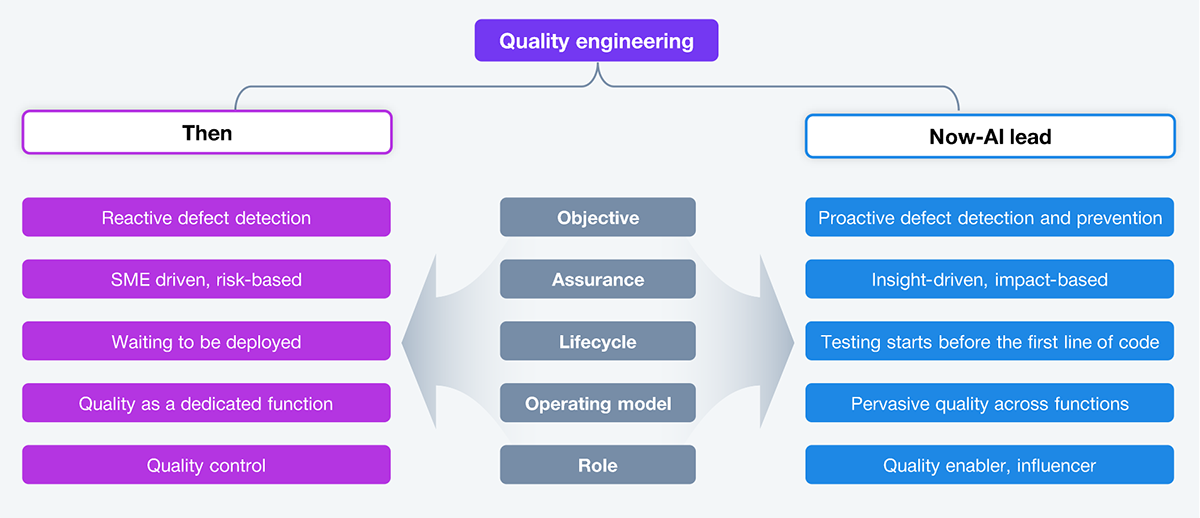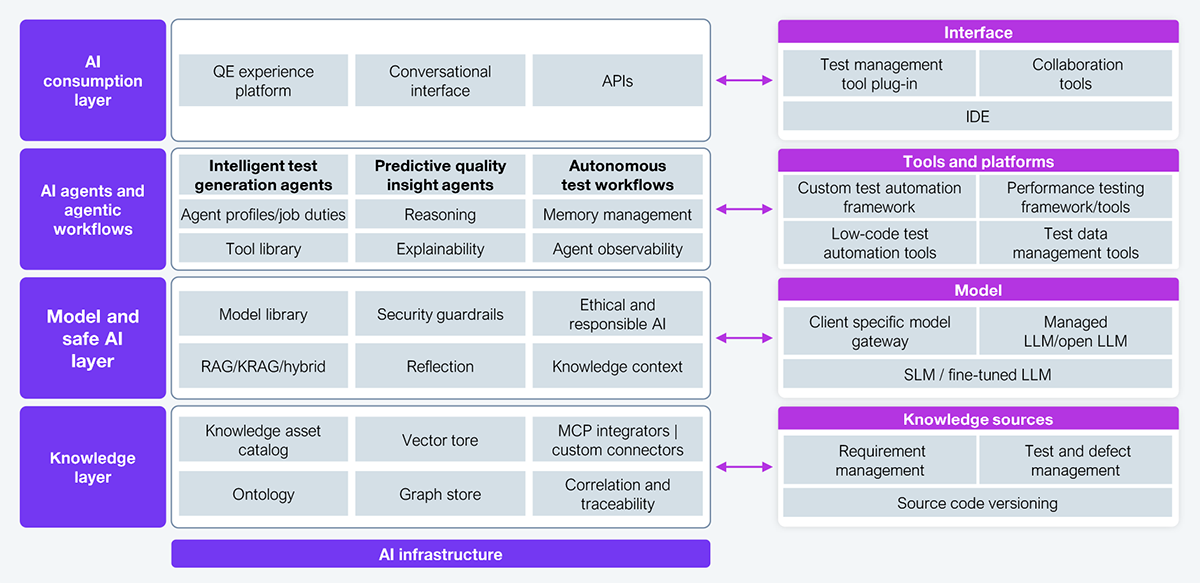Reactive quality assurance (QA) is putting CIOs and CTOs on the defensive, exposing their enterprises to increasing trust, compliance, and stability risks. By detecting defects only after they occur, the fixes are costlier, reputational damage is already underway, and regulatory exposure has grown. With poor-quality software draining an estimated $2.4 trillion from the US economy, engineering leaders must pivot to predictive quality engineering (QE) to stop issues before they reach customers or regulators.
Predictive QE uses AI trained on historical code, documentation, and test results to anticipate defects, flag high-risk components, and proactively guide developers addressing issues long before they impact the business. In the AI era, this level of prevention is important. Once trust is lost, there’s no road to recovery.
Customer experience has always been central to building software products and platforms that meet customer or ecosystem demands. Yet many enterprises continue to treat QE as a back-end function for defect detection and control, making it visible only at the end of the development lifecycle, or even worse, at the receiving end of customer experience, ultimately eroding trust.
However, the definition of quality is expanding in this AI age—it’s no longer just about code, but about trusted systems. Trust has become the defining benchmark of QE, encompassing transparency and reliability within the delivery fabric, continuous system monitoring, risk prediction, and real-time decision-making at all stages of the lifecycle.
For engineering leaders, the way forward is to elevate the entire lifecycle by enabling predictive QE, increasingly powered by AI—leading to accelerated release velocity, lower business risks, and an uplift in customer confidence and experience. Movate supports their journey by providing them with applications that are not only reliable but resilient, ethical, and business-ready (see Exhibit 1).

Source: HFS research, 2025 and Movate Inc.
The evolution of QE has been dramatic—from reactive, expert-driven defect detection to proactive, AI-led defect prediction and prevention. Traditional approaches waited for defects to appear. Movate’s approach anticipates by using AI-driven telemetry, knowledge graphs, and impact-based regression analysis to prevent issues before they affect the user.
This shift marks the entry of “pervasive quality,” where assurance is embedded across the lifecycle, from design to deployment, rather than confined to a QA silo. By turning data into foresight, Movate elevates quality from an inspection step to a strategic enabler of continuous innovation. For instance, it helped a global cosmetics company modernize QA through a QE center of excellence, enabling end-to-end automation with over 300,000 annual test executions across 15 sites and transitioning from monthly to daily releases, thereby improving quality.
Enterprises need a governed, four‑layer AI architecture to make quality autonomous. Movate demonstrates how this works in practice (see Exhibit 2) through enterprise knowledge, AI model governance, agentic workflows, and human interfaces, transforming traditional QA into a predictive, autonomous quality engine. Through this architecture, developers have access to a high-trust, high-velocity quality model that enables them to:

Source: HFS research, 2025 and Movate Inc.
With costs climbing, systems becoming more fragmented, and compliance risks intensifying, enterprises are increasingly under operational strain. Movate’s AI-driven QE services counter these challenges by infusing automation, intelligence, and resilience into the quality lifecycle
(see Exhibit 3).

Source: HFS research, 2025 and Movate Inc.
With this model, tech leaders benefit from various capabilities:
Movate’s “Contextualize–Co-Engineer–Co-Deliver” framework integrates AI automation with human oversight to create enterprise knowledge graphs, embed AI agents within DevSecOps workflows, and deploy agile, AI-native pods that sustain continuous and accountable quality. This approach positions Movate as a co-innovation partner rather than a traditional testing provider.
The impact is evident: a global private equity firm achieved 30% productivity gains, 20% faster releases, and 60% fewer script failures; a leading cosmetics company delivered zero production defects and reached 80% automation readiness; healthcare and CPG clients reduced testing cycles by half, doubled performance, and strengthened compliance. These outcomes represent more than efficiency; they signal a shift toward building trust at an enterprise scale.
In an AI-first world, testing can’t be a final checkpoint; quality must be predictive, continuous, and shared across product, engineering, and operations. By operationalizing AI governance, automating core workflows, and reinforcing human oversight, engineering leaders can build resilience, make informed decisions, and earn user trust. As Movate and HFS highlight, quality today is about engineering trust at scale, not just finding defects.
Register now for immediate access of HFS' research, data and forward looking trends.
Get StartedIf you don't have an account, Register here |
Register now for immediate access of HFS' research, data and forward looking trends.
Get Started